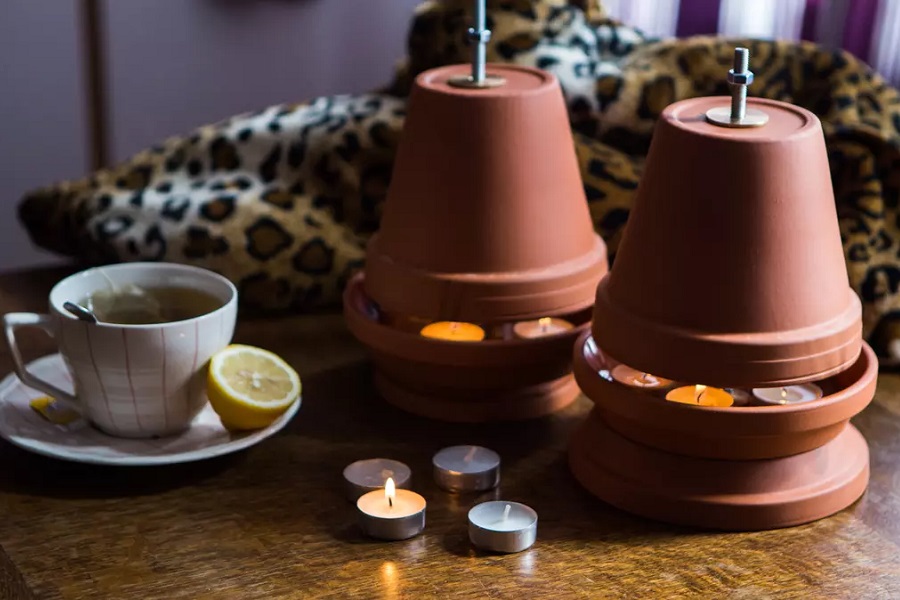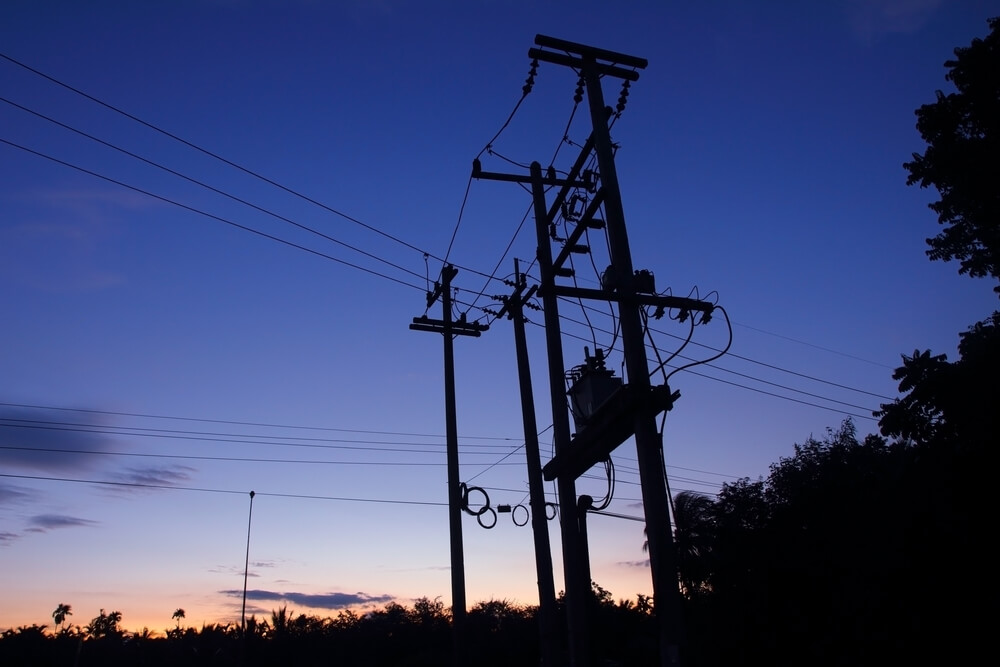Central heating is essential for winter weather, but what happens during a power outage? Winter storms can knock down power lines and disrupt generators, so how can you create emergency heat in those situations?
Fortunately, we will show you emergency heat sources for power outages. These options can come in handy so that you’ll stay nice and toasty, even if it’s a veritable blizzard outdoors.
Alternative Heat Sources to Consider When Prepping
The best time to consider alternative heat sources is before the cold weather arrives. If a power outage does occur, you don’t want to be stuck with only your body heat, scrambling to figure out how to stay warm. Here’s a quick overview of the different options available for purchase. Many of these emergency heat sources you can find on amazon.
- Portable Heater – Usually, space heaters can work wonders at maintaining a comfortable interior temperature, but since they rely on electricity, they’re not an option during a power outage. Instead, you have to buy a battery-powered model or a catalytic heater that doesn’t need an outlet. Keep in mind that battery-operated units won’t generate as much heat as those that plug in. So, if your house is frigid, you’ll need a more reliable heat source with a higher BTU.
- Wood-Burning Stove/Fireplace – If you don’t currently have a fireplace, you’ll need to spend quite a bit of money to install one. However, fireplaces or stoves are excellent because they don’t require much maintenance or upkeep. That said, you do have to keep wood handy to burn, either as logs or wood pellets.
- Kerosene Heaters – Kerosene is an excellent option as a portable heater, allowing you to move throughout the house. However, when burning any kind of fuel, you have to maintain interior ventilation. Otherwise, the fumes and smoke can build up, creating a toxic and potentially deadly environment. You should have carbon monoxide detectors on hand to prevent carbon monoxide poisoning.
- Alcohol Heaters – Portable alcohol heaters are not very common, but you can find them online. The way it works is that you pour the alcohol into a reservoir in the middle. Vapors escape from tiny holes at the top, which ignite to create a fire. Since only the vapors burn, you don’t have to worry about causing an accidental explosion.
- Gas Heaters/Gas Stove or Gas Fireplaces – Besides kerosene, propane is the most common option for portable heating. Most smaller propane tanks are disposable, so you can only use them once. If you want to reuse your gas heater over multiple seasons, you need to buy a reusable canister instead. Again, make sure to ventilate your home to prevent the buildup of toxic fumes.
DIY Alternative Heat Sources for Emergency Situations
While you can buy ready-to-use alternative heat sources, there are other do-it-yourself methods to heat your house during a power outage. The top two options to keep your house warm are terracotta pot heaters and soapstone heaters. Let’s break down how to prepare each one.
Terracotta Pot Heaters

The biggest problem with burning candles for warmth is that they don’t radiate a lot of heat. One way to capture that heat is to cover the candle with a clay pot. The clay absorbs the heat and radiates it much slower, meaning that you can stay warm for longer. Ideally, you can use up to three terracotta pots, but you’ll need at least two.
Materials Needed
- 2 or 3 differently-sized terracotta pots (no glazing or coating)
- One bolt with several nuts or a thick piece of aluminum foil
- 3 to 4 tealight candles
- 2 bricks
- 1 metal tray or cooking pan
How to Make a Terracotta Pot Heater
- Step One: Put the candles in the metal tray. You can also add some water to the bottom to help prevent the pan from heating up too much.
- Step Two: Place bricks on either side of the tray. The goal is to have something for the pots to sit on.
- Step Three: Place the first pot upside down over the bricks. If the pot is too small, you can use a metal rack over the bricks to hold it.
- Step Four: Place a ball of aluminum foil on the first pot. If the pots have holes, you can run a bolt through the center and use nuts to separate them.
- Step Five: Add the second pot. The goal is to have some space between the pots for air to flow. You don’t need much space – about an inch will do.
- Step Six: Light the candles.
After about an hour, the pots will get scalding hot, and they’ll radiate heat evenly. This heater only works for small rooms, and you need to keep it relatively close to your body for it to work correctly.
Safety Tips
- Never touch the clay pots once they’re hot. Give them a few hours to cool off before touching or moving them.
- Pay attention to the candles. If they’re too close together, they could catch the wax on fire and create a hazard.
- Keep the heater away from flammable materials, as well as pets or children.
Soapstone Heaters

Technically, this option works as a radiant heater from one spot to another. Soapstone works incredibly well at absorbing heat, so placing a block next to fire means that it will get pretty hot. Then, you can move the soapstone block from one room to another and let the heat slowly dissipate.
Materials Needed
- 1 or 2 soapstone blocks
- Oven mitts or pot holders
How to Make a Soapstone Heater
This is the easiest DIY alternative heat source, although you must have some soapstone blocks on hand. The biggest challenge is moving the block from one room to another. You can use oven mitts or tie a rope around the stone before heating it. Make sure that the cord doesn’t get too close to the fire, though.
- Step One: Place a soapstone block next to a fire or other heat source.
- Step Two: Let the soapstone absorb heat for at least an hour or so.
- Step Three: Move the soapstone to the location where you want extra warmth.
- Step Four: Repeat as necessary.
Safety Tips
Make sure to protect yourself when moving the soapstone blocks. Don’t put them on any surface that could melt or burn from the radiant heat.
Other Alternative Heat Sources
- Solar Powered Heaters – Essentially, these are electric heaters that use solar energy to power their batteries. So, you’ll have to charge the system during the day so that you’ll be able to use it at night.
- Wind-Powered Heating – Instead of solar power, these heaters use a wind turbine to generate electricity. The benefit of this option is that it works day or night. However, you need to install a home wind turbine, which can be a bit of a hassle, depending on the size you get.
What to Have on Hand for Your Alternative Heat Source
The best way to keep your heat sources ready is to practice emergency preparedness and be prepared for any issues that might arise. That is the mark of a true prepper! So, keeping these items on hand can help you stay warm during a power outage or in the winter months.
- Batteries – If you’re using a battery-operated heater, ensure that you have fully-charged backups for when the first ones run out of juice.
- Candles – You need candles both for DIY heaters and to illuminate your home. Have a mixture of candles for different purposes. Be careful with the open flame.
- Thick Clothing – While heaters can work, they’re limited in their capacity. Dressing warmly ensures that you don’t need to use as much fuel.
- Hand Warmers – Your extremities (i.e., hands and feet) will get cold faster than the rest of your body. Portable hand warmers can help prevent frostbite, and they last for hours.
- Tool Kit – If something goes wrong, you may have to fix your heater on the fly.
Final Verdict
Ideally, you can test different alternative heat sources for power outages before you need them. This way, you can figure out which ones work the best for your home and your needs. Overall, fuel-based heaters are the most reliable, but they require ventilation, and you have to keep cans of fuel around.
FAQs About Alternative Heat Sources
How do you make heat without electricity or fire?
The best option is to use chemical mixtures, such as those found in hand warmers. Otherwise, you can bundle your body’s natural heat by wearing layers of clothing.
What is the best source of heat in a power outage?
A fire, natural gas, or fuel-based heater is the most reliable heat source during an outage for indoor use. It’s easy to use and will generate more than enough heat for long periods of time to keep you warm for hours on end.
What kind of heater can I use without electricity?
Propane heaters, kerosene, and alcohol heaters are all options, or you can make a candle heater like the one we listed above.


We equipped our fireplaces with natural gas logs. We also installed stainless steel reflectors. If power is out, and gas is still available, the gas logs will warm the room. If gas goes out I will remove the gas logs and bun wood.